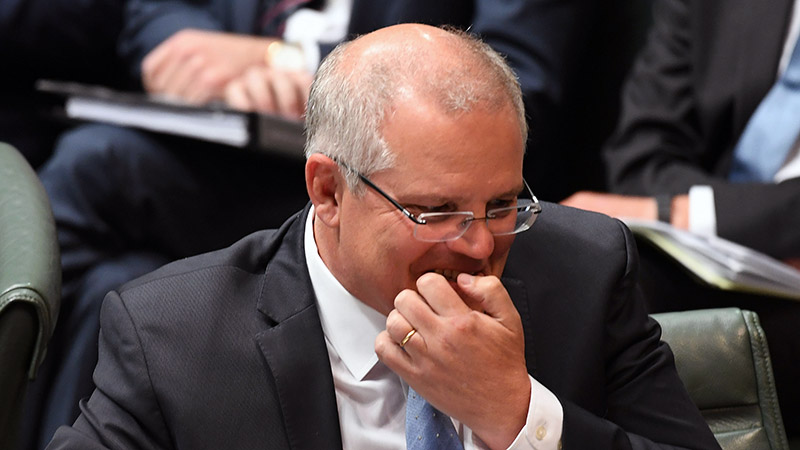There’s a bit of promise for health small caps in the federal Budget – but there’s also a big ‘if’

Prime Minister Scott Morrison during question time at Parliament House. Pic: Getty
Tens of millions of dollars are being promised to the health industry as the Coalition prepares to hand down its sixth federal budget — though an expert says not to bet on the funding with polling suggesting the government may change come the election.
The 2019 federal budget, to be handed down from 7:30pm AEST today, will outline government spending for the 2019-2020 financial year.
And the Minister for Health, Greg Hunt, has been ramping up his efforts in supporting that budget, announcing a swathe of promises worth tens of millions of dollars in the lead-up.
The funding — should the Coalition survive another term when voters head to the polls in mid-May — is being welcomed by many across the industry and will excite much of the ASX’s small cap health stocks too.
But Iain Wilkie, associate analyst at Morgans, warned against too much excitement.
“I’d say unless there is any significant movements in the budget to move the likelihood of the LNP keeping its post, the real thing to be looking at is likely what Labor is offering,” he told Stockhead.
In the last 24 hours Hunt has announced his government will spend $10 million to establish a Dementia Centre of Excellence at Perth’s Curtin University, as well as subsidising skin and breast cancer medicines Bavencio and Ibrance by putting them onto the Pharmaceutical Benefits Scheme.
The Bavencio subsidy will cost $81.5 million; the cost for Ibrance was not revealed.
Exopharm (ASX:EX1), MGC Pharma (ASX:MXC), Actinogen (ASX:ACW), NeuroScientific Biopharmaceuticals (ASX:NSB) and PainChek (ASX:PCK) are small cap companies dabbling in treatments for dementia.
Western Australia is getting plenty of love federally, as the weekend saw the government promise $15 million to upgrade Perth’s King Edward Memorial Hospital.
And on Friday, Hunt announced $32.6 million for breast cancer patients to have their scans covered by Medicare, which the government said would save patients up to $1,500 per scan.
- Subscribe to our daily newsletter
- Join our small cap Facebook group
- Follow us on Facebook or Twitter
Dr Ralph Highnam, CEO of Volpara Health Technologies (ASX:VHT), which provides high-end software to help breast scan clinicians make better diagnoses, welcomed the funding.
“It’s exciting stuff, the government starting to understand the need for different imaging modalities in the treatment pathway, and starting to fund them — this is good news for women,” he told Stockhead.
Other commitments have included $3 million towards treating macular disease — a theme several small cap biotechs are tackling — as well as $3 million for chronic fatigue syndrome research and $65 million dedicated at looking into personalised medicine, a field many in the industry have been crying out for.
This all follows a mid-March announcement unveiling the 10-year Australian Stem Cell Therapies Mission earlier this week, aimed at supporting radical stem cell research for a range of conditions including heart disease, spinal cord injuries, strokes and kidney disease.
That will see $150 million in funding for stem cell research, drawn from the Medical Research Future Fund.
“This is a very welcome initiative in the stem cell research and development sector and a much-needed one,” Cynata (ASX:CYP) chief Dr Ross Macdonald told Stockhead at the time.
UNLOCK INSIGHTS
Discover the untold stories of emerging ASX stocks.
Daily news and expert analysis, it's free to subscribe.
By proceeding, you confirm you understand that we handle personal information in accordance with our Privacy Policy.








